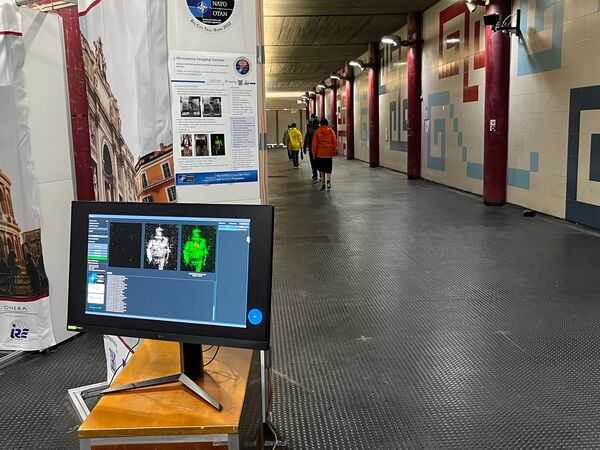
The Microwave Imaging Curtain to detect concealed firearms using microwave technology was one of the Detection of Explosives and Firearms to Counter Terrorism (DEXTER) technologies demonstrated in the Rome Metro on 24 May under NATO Science for Peace and Security Programme. (Brooks Tigner)
One of NATO's flagship counter-terrorism research consortia has moved a step closer to market with a live demonstration of its capabilities. Once commercialised, the project's real-time threat detection systems could fan out to civil critical infrastructure sites across the allies, according to NATO and national research officials, who said Europe's armies are closely following the work's outcome for its potential military applications as well.
“We have had some informal talks with Italy's military, for example, and they have expressed interest in DEXTER [Detection of Explosives and Firearms to Counter Terrorism] for its potential peacekeeping uses,” a researcher told reporters after the technologies' demonstration on 24 May in a Rome Metro station.
Sponsored by NATO Science for Peace and Security (SPS) Programme, DEXTER was launched in 2018 with EUR5 million (USD5.3 million) in funding as a trio of tightly linked projects. Microwave Imaging Curtain (MIC) uses microwave technology to detect concealed firearms being carried by someone. The Explosive Trace Detection Sensor (EXTRAS) uses ultraviolet lasers for stand-off detection of explosives and traces on someone's clothing. Integrated System for Threats Early Detection's (INSTEAD's) customised software links the other two for fused forensic analysis, command-and-control camera-tracking, and real-time covert security alerts of moving suspects.
All three involve the national defence research agencies of various allies, although industry and public end-users have provided advice and feedback on the projects' objectives.
Looking to read the full article?
Gain unlimited access to Janes news and more...







